The celebrated Mr. K pays a birthday tribute to one of comics’ most respected artists…
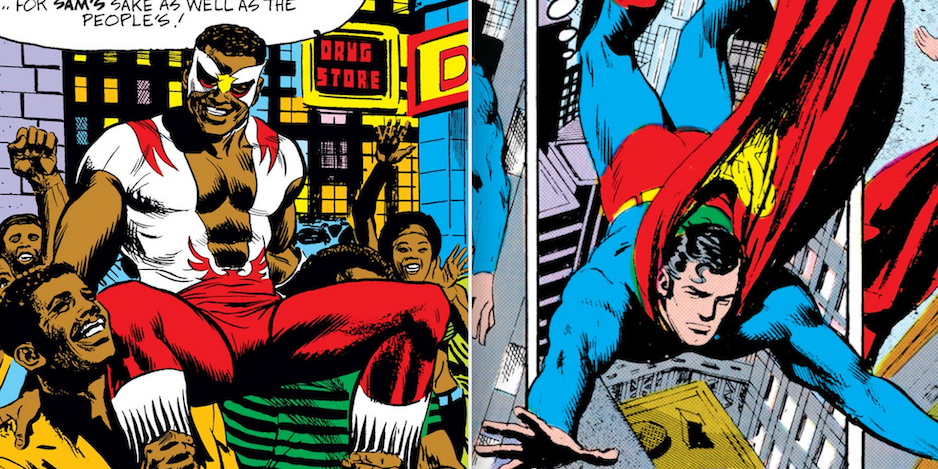
—
UPDATED 3/7/24: The late Gray Morrow was born 90 years ago! This birthday salute by 13th Dimension columnist Paul Kupperberg first ran in 2021 but it holds up just as well today. Dig it. — Dan
—
Our pal Paul Kupperberg has another groovy column here for you — a birthday salute to the great Gray Morrow, who was born 88 years ago on March 7, 1934.
You’ll dig it — but don’t forget that our esteemed columnist has a variety of books out there to entertain and enlighten you, as well, such as the novel JSA: Ragnarok. You can click here to check it out.
And away we go…
—
By PAUL KUPPERBERG
One of the most misused words on the internet is “underrated,” as in “(insert creator being discussed here) is so underrated.” Usually, what they mean is “Oh, I haven’t thought about (insert creator being discussed here) in a long time!”
I won’t make the same mistake here: Dwight Graydon “Gray” Morrow (March 7, 1934 – November 6, 2001) isn’t “underrated.” Rather, he’s one of the most respected and admired artists of his time whose work, 20 years after his death, still stands the test of time!
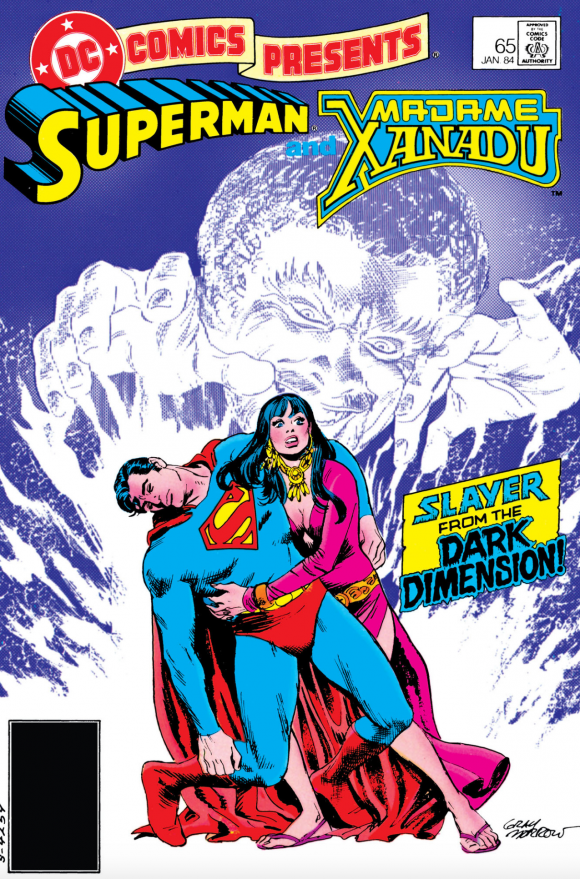
Gray Morrow was hardly a prolific comic book artist; according to Mike’s Amazing World of Comics (“An Unofficial Official Database of 13th Dimension!”®) he drew some 163 stories in his 45-or-so-year career, less than four stories a year, but to paraphrase Spencer Tracy in 1952’s Pat and Mike, “Not many credits, but what there is is cherce.”
Gray was born in Fort Wayne, Indiana, and grew up on the lush newspaper comic strips of the 1930s and 1940s. After going through a variety of jobs in the Midwest, Gray moved to New York in 1955 where he met other young artists like Al Williamson and Wally Wood, and was soon drawing for Marvel Comics (then still Atlas) and others. In addition to comics, he was also a book and magazine illustrator, and even dabbled in animation on the 1967 Spider-Man animated series.
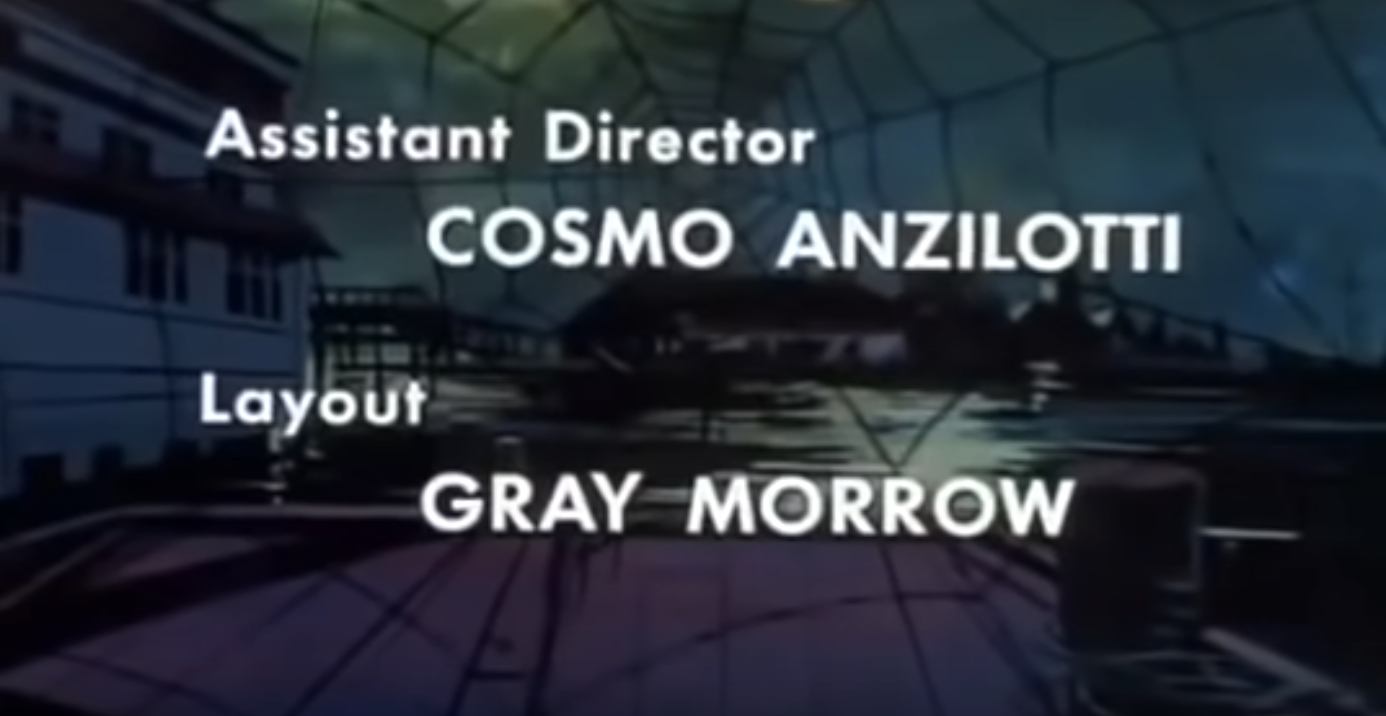
Morrow didn’t draw a lot of superhero stories. He wasn’t a “superhero” artist in the Jack Kirby tradition. Superheroics call for exaggerated anatomy and over dramatized posturing. He was better suited to science fiction and horror, or regular-guy action/adventure heroes. His characters were firmly planted on the ground, even — as in the example from DC Comics Presents below — when they were in flight. He came as close as any comic book artist of his generation to capturing reality on the page.
He was also a suave and debonair gentleman, as conveyed in this portrait of the artist by my late brother Alan, a friend of Gray’s and a sometime collaborator.
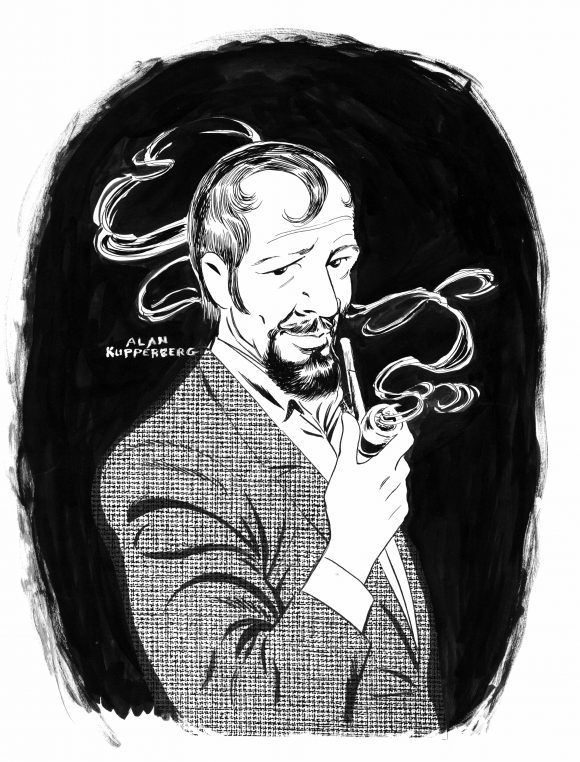
And so, in chronological order, here are MY 13 FAVORITE GRAY MORROW COMIC BOOK STORIES:
—
Battlefront #41 (Atlas, July 1956). This four-pager from Gray’s early days at Atlas/Marvel offers a glimpse of the artist to come. “The Field of Battle” shows a lot of potential, not to mention his comic strip and EC Comics influences. Unlike a lot of artists at the beginning of their careers, Gray had already learned to draw loose, graceful figures and naturalistic facial expressions.
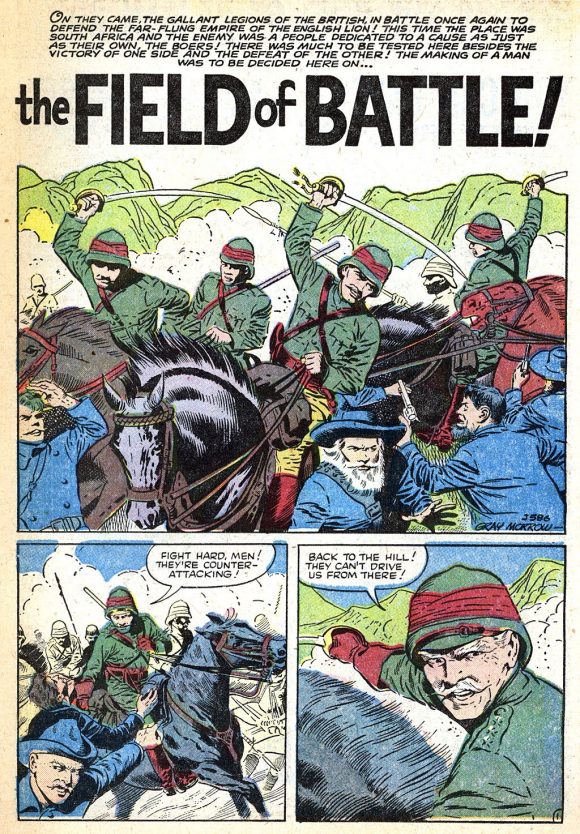
—
Classics Illustrated #159 (Gilberton, Nov. 1960). Just a few years later, Morrow had already landed on his distinctive style. It’s all there in this Classics Illustrated adaptation of The Octopus, a period novel by Frank Norris, from the delicacy of his inks to the variety of real and interesting faces with which he populated his stories.
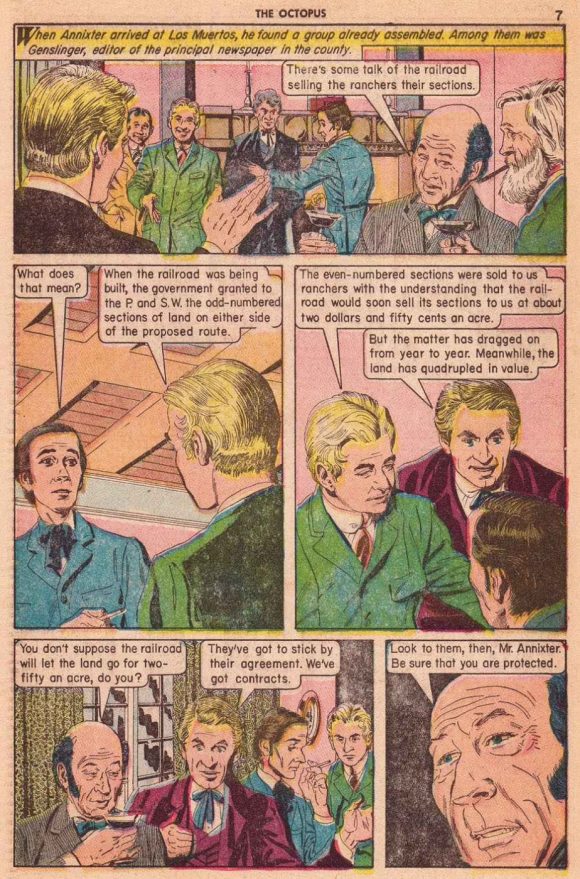
—
Creepy #2 (Warren, Jan. 1965). Gray Morrow’s art didn’t need color to make it work; in fact, his work benefited from black-and-white reproduction, as in this Otto Binder-scripted story, “Wardrobe of Monsters.” Like so many of his contemporaries, Morrow did some of his best work for the Warren magazines, showing off his mastery of crosshatching and texture.
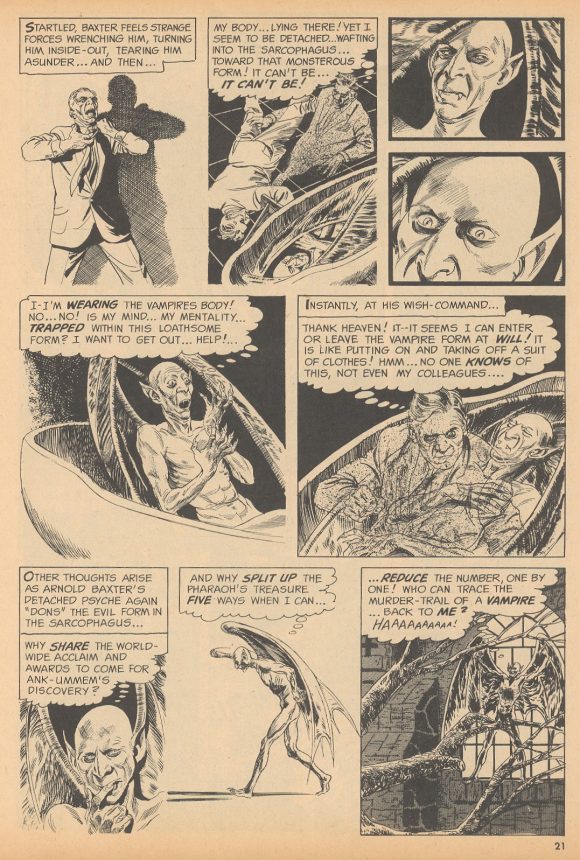
—
Blazing Combat #3 (Warren, April 1966). Another great Warren job, Archie Goodwin’s “Water Hole.” Again, his use of texture and his understanding of folds and shadows is uncanny, as well as his ability to draw horses. I chose this page in particular based solely on the look of nauseated horror on the face of the soldier in the foreground of Panel 3 as he reacts to the massacre.
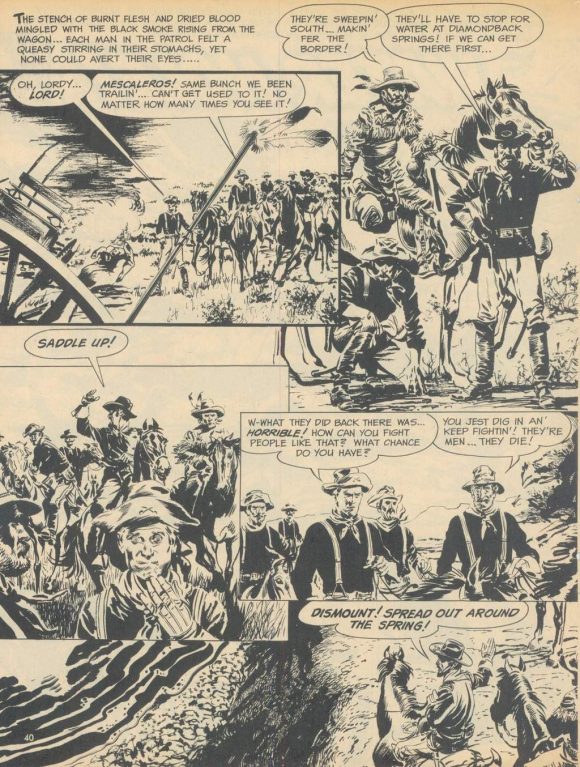
—
My Love #14 (Marvel, Nov. 1971). Morrow went full-on groovy and far out in Marvel’s My Love #14 with “It Happened at Woodstock,” a story written by Gary Friedrich, where he not only brings his usual solid, grounded art but also manages to nail the likenesses of Janis, Richie, and Country Joe. Gray was also the best colorist of his own work and both the cover and story are tentatively credited to him. Check out how he pops the main figures on the cover and creates a sense of depth in the scene with receding bands of color. Dig it!
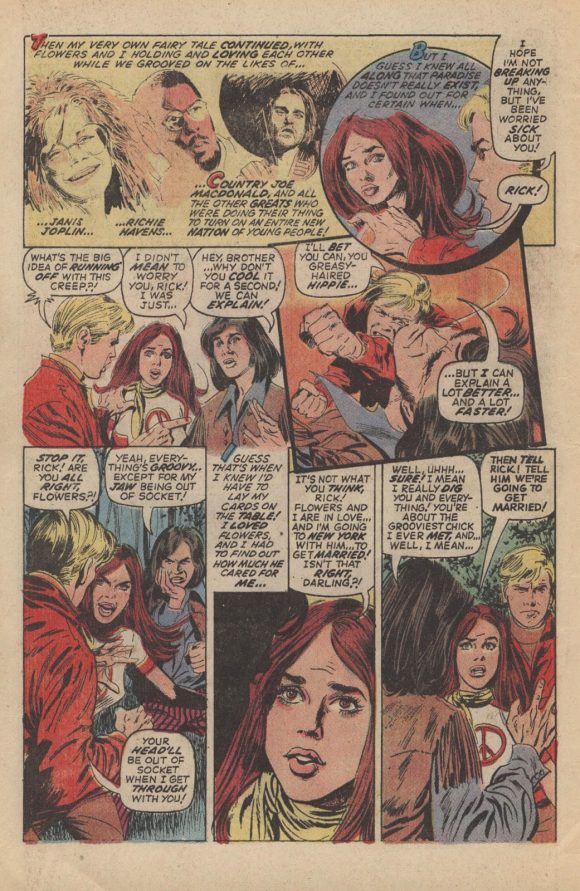
—
Captain America #144 (Marvel, Dec. 1971). It was another Gary Friedrich script, for “The Falcon Fights Alone,” that led to my favorite costume reveal ever. In the hands of… well, just about any other artist, Sam Wilson would have come leaping out of the other room in typical exaggerated superheroic posturing. But not Morrow. His characters don’t posture. Instead, Sam makes his new costume debut by stepping awkwardly and hesitantly from the bathroom with a very human and understandably embarrassed shrug.
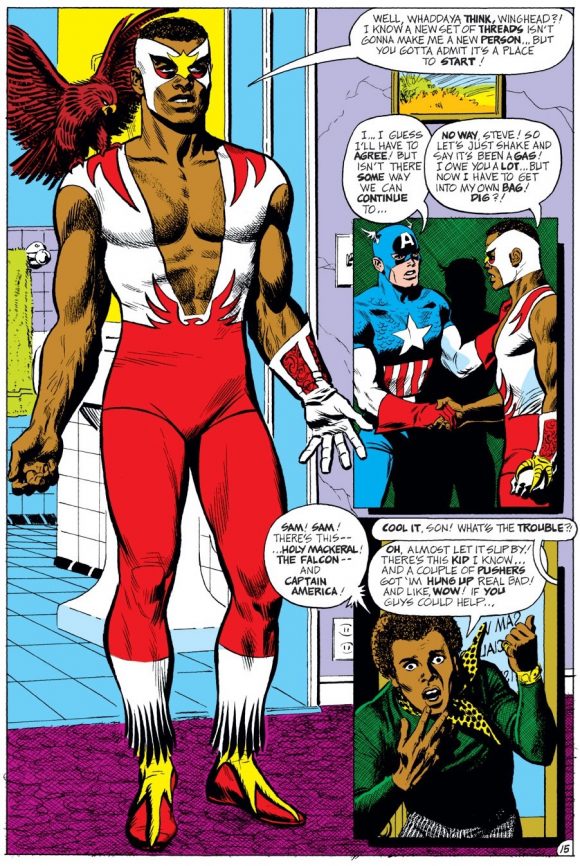
—
Adventure Comics #413 (DC, Dec. 1971). Morrow entered a brief but productive association with DC Comics at the start of the 1970s, most of the work being done for his old friend Joe Orlando, now an editor for the company. He produced a handful of memorable back-ups starring Zatanna the Magician for Adventure Comics, co-starring her Golden Age hero dad, Zatara, and featuring appearances by the JLA. Once again, his costumed heroes are unlike anyone else’s: They look less like musclebound superheroes than a bunch of guys dressed up for a masquerade party.
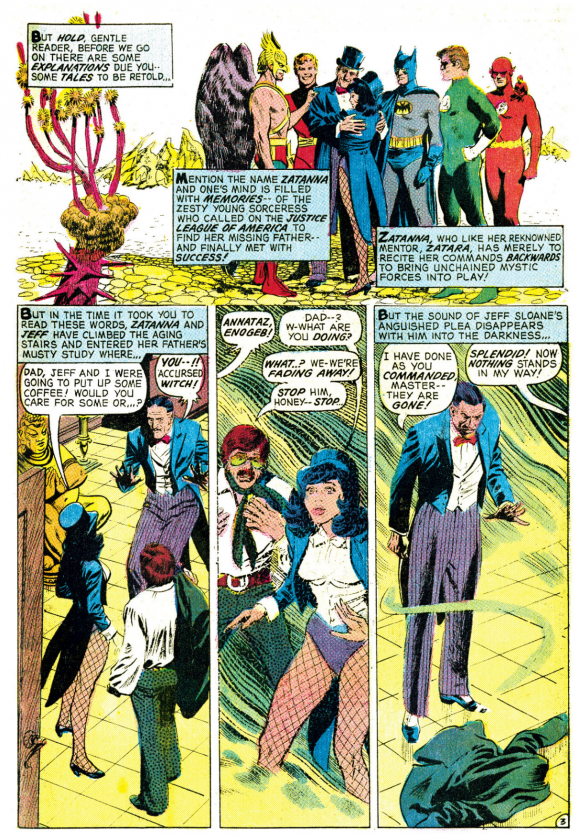
—
All-Star Western #10 (DC, Feb./March 1972). Not that he couldn’t bring the dramatic to a reveal when he wanted to, as in this splash from the debut of DC’s El Diablo, “The Devil’s Secret,” written by Robert Kanigher (and edited by Orlando).
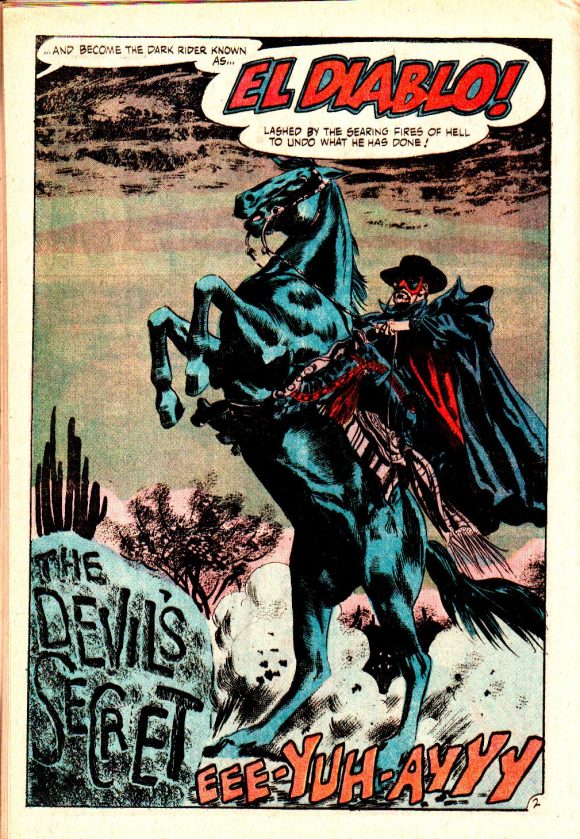
—
World’s Finest Comics #245 (DC, June/July 1977). Again for editor Orlando, Morrow tackled the original Western version of Vigilante in “The Plague Makers” (and several subsequent stories) by Bill Kunkel. In just those few short back-up stories, Morrow set his rendition of Vigilante in my mind as the definitive version.
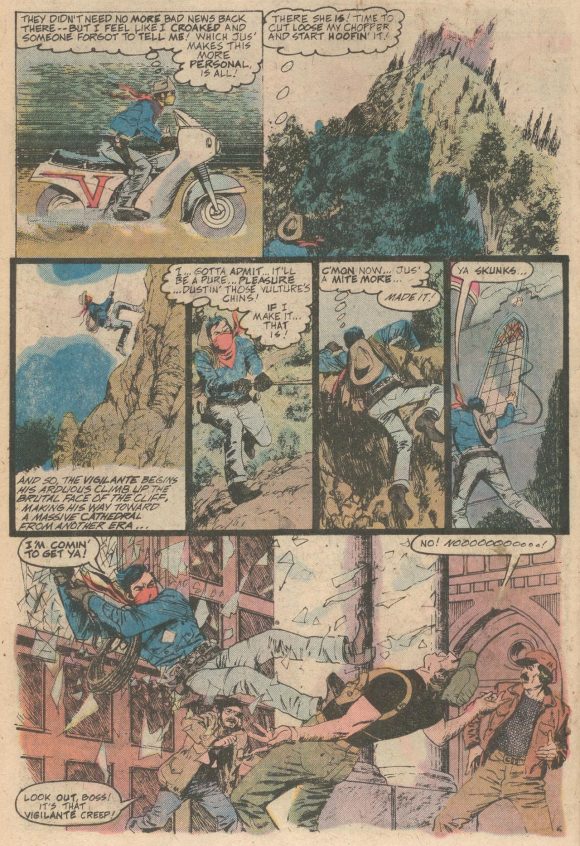
—
Black Hood #1 (Archie Comics, June 1983). This Gray Morrow-drawn revival of Archie Comics’ Golden Age hero the Black Hood has become somewhat iconic to fans of the era. Rather than continue the costumed heritage of the character, writer Cary Burkett and Gray anchored “The Mask… and the Man” in the real, gritty world at which the artist excelled.
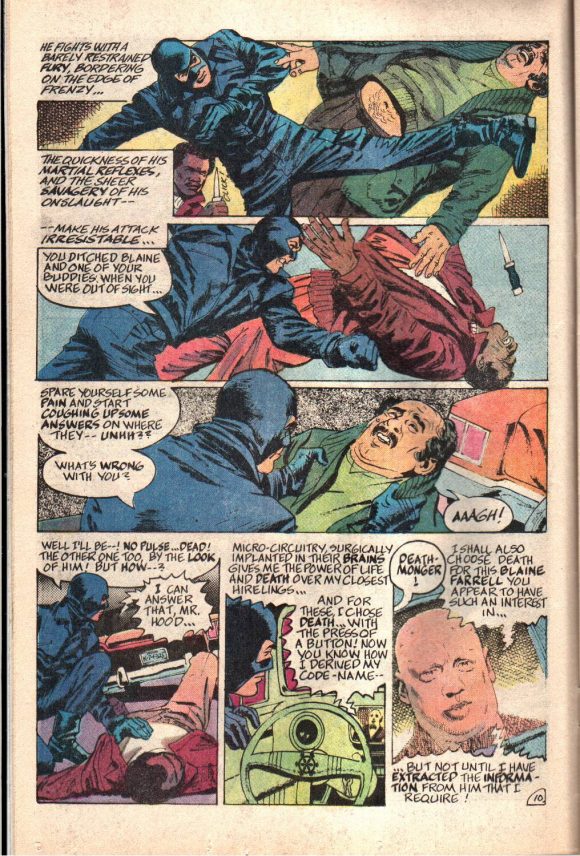
—
DC Comics Presents #65 (DC, 1984). Editor Julie Schwartz gave me a few “gifts” in our professional relationship, one of the best of which was assigning my Superman and Madame Xanadu team-up story in DC Comics Presents, “Slayer from the Dark Dimension,” to Gray Morrow. If Christopher Reeve made us believe a man could fly on the big screen, it was Gray’s depiction of Superman that made me believe that if a man actually did fly, he would look just like this when he did! The first indication that I’d won the Artist Lottery was when Julie handed me the inked and lettered boards to the finished job and said, “Here’s your Madame Xanadu story. I think it came out OK.”
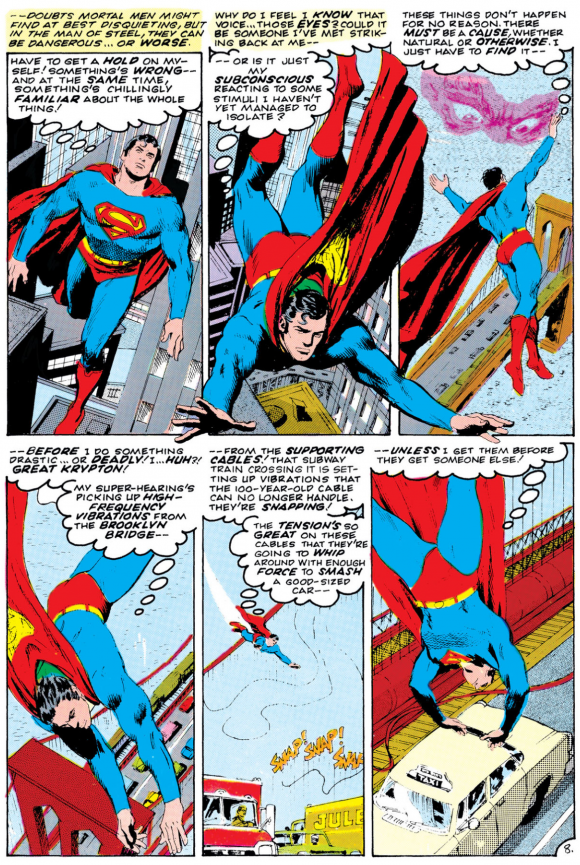
—
Star Trek Annual #1 (DC, 1990). Space was not a final frontier for Gray Morrow. He had rendered numerous science fiction stories for comics (including Charlton Comics’ licensed Space: 1999 title in the 1970s), not to mention countless illustrations for science fiction magazines. “So Near the Touch,” by George Takei and Peter David proved he hadn’t lost his SF action/adventure chops or his ability to draw the characters’ likenesses.
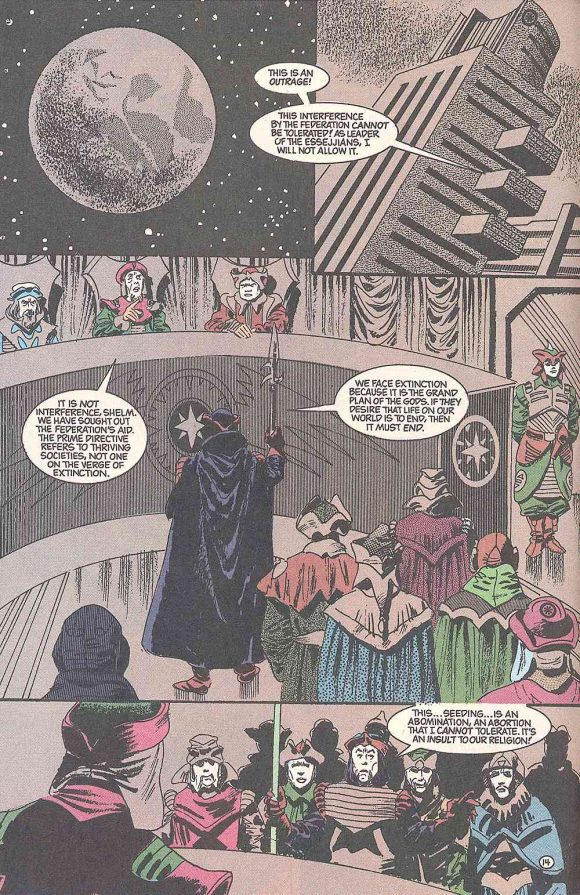
—
The Big Book of Vice (Paradox Press, March 1999). Some of Gray’s last jobs were short features for the DC Comics imprint Paradox Press’s Big Book series, including “Marlboro World” (written by Steve Vance). Whether due to age or experience, Morrow had distilled his style down to its simplest form, proving that in the hands of a master, less can be more than enough.

—
MORE
— PAUL KUPPERBERG: My 13 Favorite CURT SWAN Stories. Click here.
— PAUL KUPPERBERG: 13 Essential PETE MORISI Stories. Click here.
—
PAUL KUPPERBERG was a Silver Age fan who grew up to become a Bronze Age comic book creator, writer of Superman, the Doom Patrol, and Green Lantern, creator of Arion Lord of Atlantis, Checkmate, and Takion, and slayer of Aquababy, Archie, and Vigilante. He is the Harvey and Eisner Award nominated writer of Archie Comics’ Life with Archie, and his YA novel Kevin was nominated for a GLAAD media award and won a Scribe Award from the IAMTW. Now, as a Post-Modern Age gray eminence, Paul spends a lot of time looking back in his columns for 13th Dimension and in books such as Direct Conversations: Talks with Fellow DC Comics Bronze Age Creators and Direct Comments: Comic Book Creators in Their own Words. His latest, Direct Creativity: The Creators Who Inspired the Creators, is due out in April.
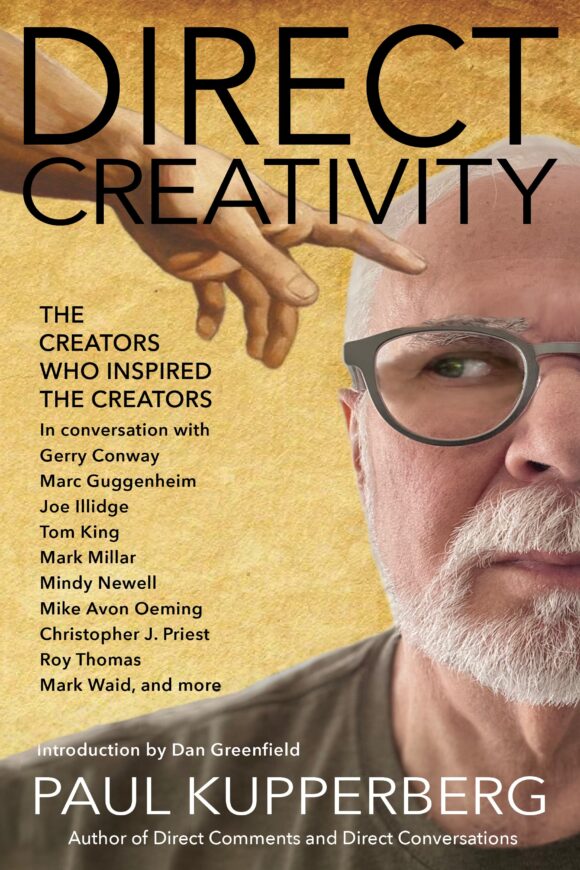

March 7, 2021
Gray also drew a Supergirl story for Adventure Comics back in the 70s that I loved; I remember it involved the antagonist killing himself by crashing his car, killing himself and another woman.
He also had a great gig painting dozen of covers for the Perry Rhodan series back in the same period–that’s where I first noticed his work.
March 8, 2021
I remember those Rhodan covers well. I still have them.
March 8, 2021
I reckon you’re thinking of #419, Lou, in which returning romantic interest/abusive scumbag Mike Merrick had the memorable exit line, after his witch girlfriend asked where their friends were waiting for them: ‘In Hell, baby — in HELL!!’
John Albano’s story was actually illustrated by Tiny DeZuniga and Bob Oksner, but I can see how the memory would play tricks with that combo’s work.
I well remember Gray Morrow’s Zatanna work, though – that Gorganus fella was terrifying!
March 9, 2021
You’re right, Martin! Not having the actual issue in front of me, I should have researched first before opening my mouth!
March 9, 2021
There are panels there with a definite Morrow vibe! I love that period of Supergirl, any excuse to go back there is fine by me.
March 7, 2022
I love his comic book work, but those covers for Rhodan were phoned in. I never would have picked up the series if it was still using his art for the covers. I’m glad they got George Wilson to do the last few years of covers.
March 7, 2021
I really enjoyed this post! Those Vigilante stories were childhood favorites!
March 7, 2021
As much as I love Mike’s Amazing World of Comics, I think his number of 163 stories is off. Using the GCD and a search under pencils, I counted 174 stories (non-reprint) in the first 5 pages of 11 pages of credits (1954 – Feb 1979).
Nice choices of some of Gray’s best work.
March 7, 2021
He did a fantastic Rose and the Thorn story which featured as back up in the Lois Lane comic.
March 7, 2021
It’s a shame that John Romita Sr. redrew Cap’s head on that page with The Falcon revealing his new costume.
March 7, 2021
I would love to see a paperback collection of those Gray Morrow Vigilante stories. Those were some rare gems in the Adventure Comics and World’s Finest issues of the early and mid 1970s.
March 8, 2023
I first encountered Gray on those Vigilante stories – the art was so different than most other books at the time and as Vigilante wasn’t a character that I knew, it really worked to cement both the art and the character as ‘definitive’. I also love his 70s Zatanna work, particularly the DC Super Stars cover – that’s how I first met Zatanna, too…
March 8, 2021
I’m glad Paul mentioned the Paradox Press Big Books, they were great reads that seem to have become largely forgotten.
March 8, 2021
How could you forget his work on my LOIS LANE series, Paul? It was absolutely gorgeous, and I think more than half the reason it was successful!
March 8, 2021
Now Mindy, it’s at least a 50/50 split, you guys complemented pne another perfectly.
I’m sure I read the other year that the Lois micro-series was being collected, finally, but it seems not to have happened.
March 7, 2022
Actually, it was recently collected, in the “DC’s Greatest Detective Stories Ever Told” trade. It was the reason I bought the book!
March 7, 2022
I’ve not even heard of this, Joey. Time for a quest!
March 8, 2021
A great tribute to a great artist. Some stunning stuff here, most of which I have never seen! I met Morrow early in one of those wonderful World’s Finest Dollar comics with the Vigilante. Made quite the impression! As a stupid kid, I didn’t care for his Batman (he dared to draw his actual eyes, not just the white slits!), but even then I knew Morrow was something special in comics.
March 14, 2021
No love for his work on the Shadow Line Saga titles?
March 8, 2022
One of my prized possessions is The Illustrated Roger Zelazny. It’s a collection of Zelazny stories illustrated by Gray Morrow. It was Byron Priess’ first high-profile publishing venture in the late 70’s after Weird Heroes and Fantasy Illustrated. I’ve still got the copy I received for Christmas that year. It’s a real high water mark in Morrow’s career.
March 10, 2022
I also thoroughly enjoyed Morrow’s Tarzan and Flash Gordon Sundays. And one of my biggest disappointments in DC’s questionably-titled “Superman’s Greatest Team-Ups” hardcover reprint of selected DC Comics Presents issues was the absence of the Madame Xanadu story (as well as Paul’s Power Girl team-up story). I wouldn’t buy it as a result. A reprinting of the entire DC Presents series in sequential order would have been far better appreciated.
March 7, 2024
I remember some of these! And I could always recognize Morrow’s artwork! Thank you!